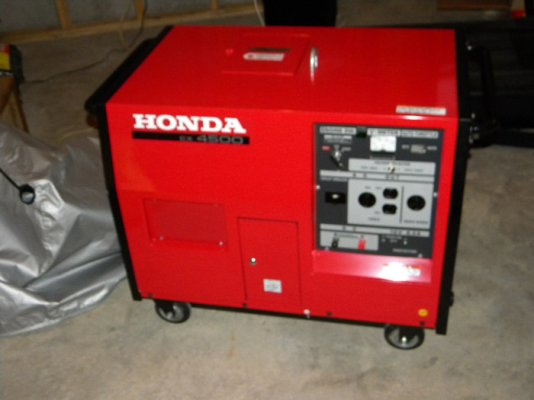I bought this Honda EX4500 after four days without electricity in 1999 when we were living in MD. We could get by with it because the house had natural gas heat, stove, and water heater. I read a lot about the need for load shedding, turning off stuff so as not to overload the generator. Even with this one at 4k watts continuous, if DW was using the coffeemaker and hair dryer at the same time everything else except maybe a couple small light bulbs had to be off. The cabinet is lined in foam and it has what looks like a small car muffler on it. Very quiet.
And my father was a power company lineman for a time so yes I did have a transfer switch!
DW was chiding me a bit about spending the money on it (~$2,500 I think) until one February day she came home from work just after dark. I asked "Did you notice anything unusual?"
"No."
"Did you notice that we're the only house on the block that has any lights on? And that the furnace is running?"
Then her light bulb came on.
I drained ALL the fuel from it, carburetor bowl included, and keep it in the basement with a battery maintainer on the battery. It is electric start only, no cord, which I wish it did have for a backup.
The only time we've used it since moving to WV is when her father's power was off. But I just KNOW that if I sell it we'll have a power failure the next day.
And my father was a power company lineman for a time so yes I did have a transfer switch!
DW was chiding me a bit about spending the money on it (~$2,500 I think) until one February day she came home from work just after dark. I asked "Did you notice anything unusual?"
"No."
"Did you notice that we're the only house on the block that has any lights on? And that the furnace is running?"
Then her light bulb came on.
I drained ALL the fuel from it, carburetor bowl included, and keep it in the basement with a battery maintainer on the battery. It is electric start only, no cord, which I wish it did have for a backup.
The only time we've used it since moving to WV is when her father's power was off. But I just KNOW that if I sell it we'll have a power failure the next day.



